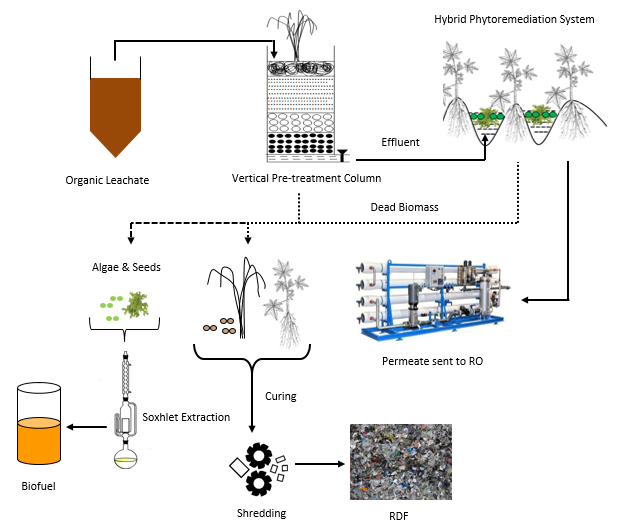- gnest_03167_published.pdf
-
Paper IDgnest_03167
-
Paper statusPublished

In the recent era, utmost attention is paid towards exploring the alternative source of energies, being more specific green energies. In modern days, when growing energy scarcity is a hot topic and considered as a global threat, in that context a green technology capable of sustainably addressing waste management issues and synthesize waste-derived end-product such bio-diesel from Jatropha Curcas linnaeus (JCL) and Chlorella vulgaris shall be paid ancillary attention. The attribution of the above-mentioned species and Lemnagibba L towards the purification of the municipal solid waste (MSW) leachate by utilizing its bioaccumulation properties and ultimately yielding several value-added co-products could be the solution of the era in terms of sustainable leachate treatment. A specially designed ridge furrow phytoremediation wetland was fabricated under the controlled environment associated with a pre-treatment facility and bottom lining system to captivate the downward percolation. A 1.5 m high Jatropha species were planted at an interval of 1 m on the ridges and the root for the same found to reach a depth of 0.8 m on an average over a period of 3 months. Leachate was supplied by means of free flow into the furrows with an initial addition rate of 1 m3 per day for a 10 m x 10 m remediation hybrid pond system and simultaneously the loading was elevated up to 80 m3/ha/day. Prior to the active remediation zone, a pre-treatment unit was installed which works on the bio-accumulation property of the vetiver grass (Chrysopogon zizanioides). A packed bed system of gravel, marble chips, sand, and coconut coir as a medium of filtration was installed to bring the concentrate waste juice up to the wetland treatment standard. Moreover, the bleaching influence of the sunlight also found to be effective against pathogen removal, active evaporation, and evapotranspiration. The ultimate treatment capacity for the designated size was assessed as ~ 0.03 m3 per day ascertained with an HRT value of 45 days. The ultimate outcome was on par with the influent characteristics obligatory for the tertiary units with a comprehensive efficacy value evaluated as approx. 60%. Thus, it’s quite evident to claim the feasibility of the present study towards the bio-remediation of the enormous quantity of leachate generation associated with the handling of solid waste which is otherwise, a costly affair.
Total file downloads: 4